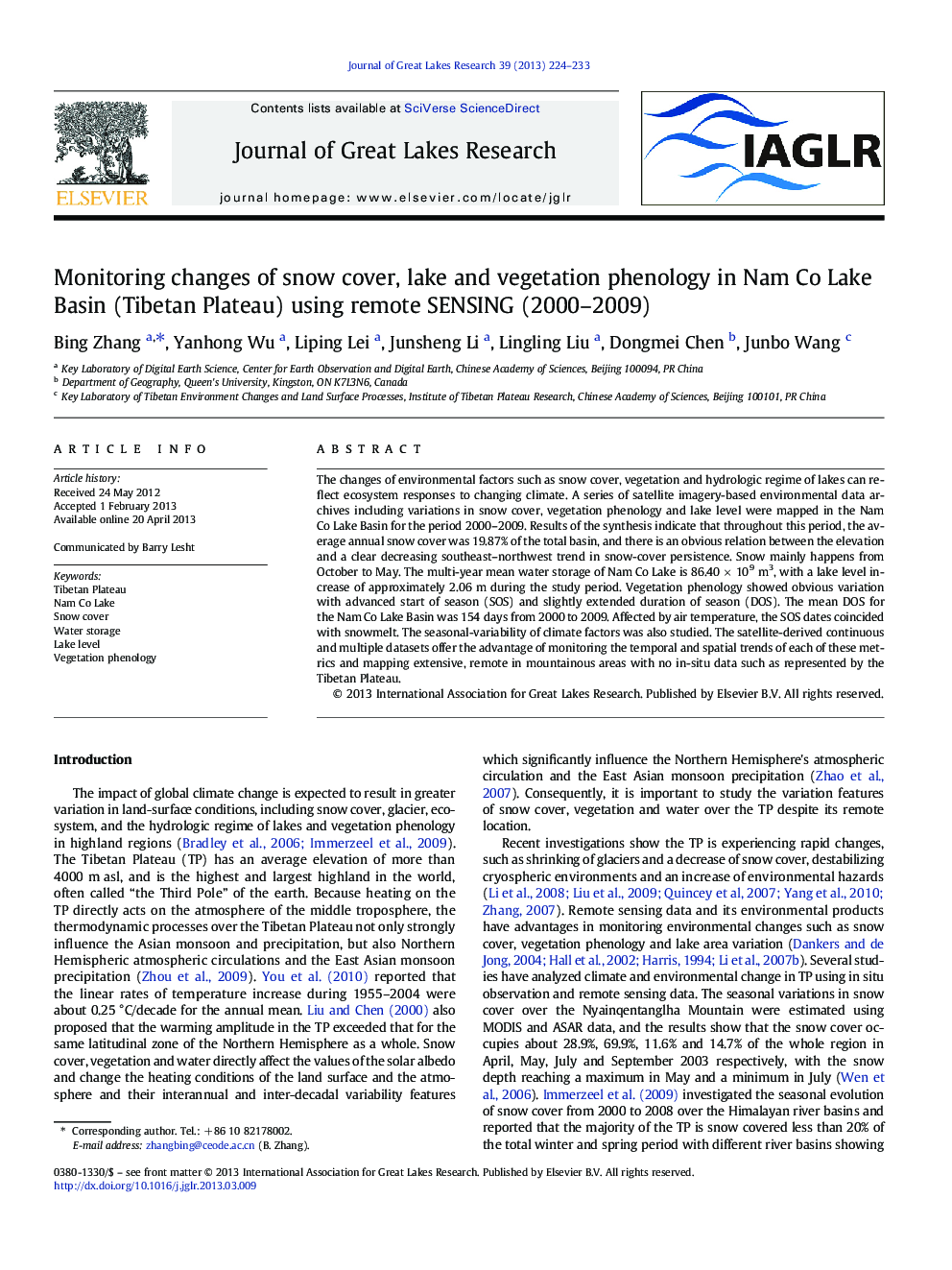| Article ID | Journal | Published Year | Pages | File Type |
|---|---|---|---|---|
| 4398621 | Journal of Great Lakes Research | 2013 | 10 Pages |
Abstract
The changes of environmental factors such as snow cover, vegetation and hydrologic regime of lakes can reflect ecosystem responses to changing climate. A series of satellite imagery-based environmental data archives including variations in snow cover, vegetation phenology and lake level were mapped in the Nam Co Lake Basin for the period 2000-2009. Results of the synthesis indicate that throughout this period, the average annual snow cover was 19.87% of the total basin, and there is an obvious relation between the elevation and a clear decreasing southeast-northwest trend in snow-cover persistence. Snow mainly happens from October to May. The multi-year mean water storage of Nam Co Lake is 86.40Â ÃÂ 109Â m3, with a lake level increase of approximately 2.06Â m during the study period. Vegetation phenology showed obvious variation with advanced start of season (SOS) and slightly extended duration of season (DOS). The mean DOS for the Nam Co Lake Basin was 154Â days from 2000 to 2009. Affected by air temperature, the SOS dates coincided with snowmelt. The seasonal-variability of climate factors was also studied. The satellite-derived continuous and multiple datasets offer the advantage of monitoring the temporal and spatial trends of each of these metrics and mapping extensive, remote in mountainous areas with no in-situ data such as represented by the Tibetan Plateau.
Related Topics
Physical Sciences and Engineering
Earth and Planetary Sciences
Earth and Planetary Sciences (General)
Authors
Bing Zhang, Yanhong Wu, Liping Lei, Junsheng Li, Lingling Liu, Dongmei Chen, Junbo Wang,
